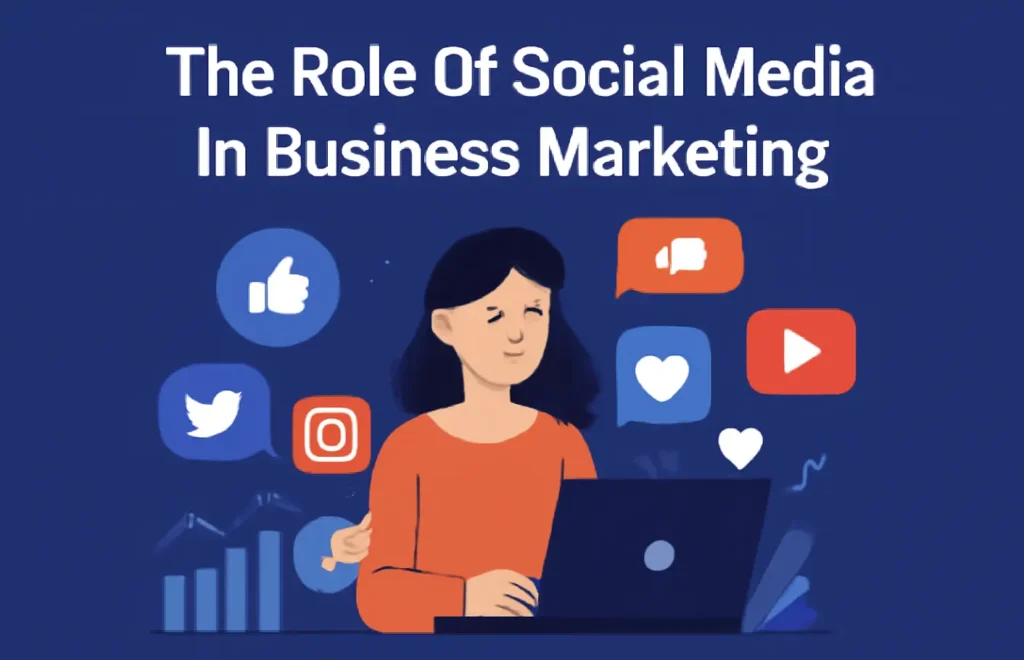In the digital age, social media has transformed how businesses engage with customers, build brand awareness, and drive sales. With over 4.7 billion active social media users worldwide (Statista, 2023) highlighting the sheer scale of potential reach businesses have when utilizing these platforms effectively. Social media marketing is no longer just about sharing pictures or status updates; it’s a powerful tool for building brand visibility, driving traffic, engaging customers, and ultimately generating sales.
In this article, we’ll dive deep into the role of social media in business marketing and explore how you can leverage it to boost your brand, drive engagement, and achieve business success.
1. What is Social Media Marketing?
Social media marketing (SMM) is a strategic approach to using social platforms to promote products, services, or brands. This marketing strategy uses both organic and paid tactics to reach and engage a target audience. Social media marketing includes:
- Organic content creation (posts, videos, stories, blogs)
- Paid advertising (targeted ads across platforms)
- Influencer marketing (collaborating with individuals who have large followings)
- User-generated content (UGC) (content created by customers or fans of the brand)
Social Media Platforms Used in Business Marketing:
- Facebook: Best for broad reach and targeting demographic groups.
- Instagram: Ideal for visual storytelling and lifestyle brands.
- Twitter: Great for real-time engagement and news updates.
- LinkedIn: B2B marketing, professional networking, and lead generation.
- TikTok: Perfect for younger demographics and viral content.
2. Why Your Business Needs Social Media Marketing

A. Building Brand Awareness
One of the primary roles of social media marketing is creating and maintaining brand awareness. 73% of marketers agree that social media has helped their business significantly improve brand visibility (HubSpot).
- Cost-Effective Brand Promotion: Compared to traditional media, social media offers businesses a cost-effective way to get noticed by their target audience.
- Viral Potential: Viral content or a well-executed social media campaign can exponentially grow your brand’s reach.
For example, consider brands like Nike or Coca-Cola, whose campaigns and content consistently perform well on social media, improving their global recognition and consumer loyalty.
B. Driving Traffic to Your Website
Social media platforms act as powerful traffic drivers. According to 80% of social media users, they use platforms to discover new products and services, meaning your business can directly drive traffic to its website by sharing engaging content and product information.
- Lead Generation Tools: Platforms like Instagram and Facebook offer lead-generation features such as forms that capture emails, phone numbers, or other customer information directly from posts.
- Integrated Shopping Features: Instagram Shopping, Facebook Marketplace, and shoppable posts allow businesses to sell directly through their social channels.
By sharing blog posts, promotional content, and special offers, businesses can effectively direct users to their website for more details or purchases.
C. Enhancing Customer Engagement and Loyalty
Social media provides an interactive platform for businesses to engage with their customers directly. It’s no longer just about pushing content—it’s about fostering two-way communication.
- Real-Time Engagement: Social media allows businesses to respond to queries, complaints, and comments instantly, building stronger customer relationships.
- Customer Feedback and Insights: 93% of consumers expect brands to engage with them on social platforms (Sprout Social).
For instance, Starbucks uses Twitter and Instagram to interact with customers, answer their queries, and showcase user-generated content, fostering a sense of community and loyalty.
3. Leveraging Social Media Advertising for ROI
A. Targeted Advertising for Precise Reach
Social media advertising is one of the most powerful tools for businesses to reach their target customers. The advanced targeting features on platforms like Facebook and Instagram allow advertisers to reach specific demographics based on:
- Location
- Age
- Gender
- Behavioral Interests
- Purchase History
- Stat: 93% of marketers consider Facebook Ads the most effective for ROI (Statista).
Businesses can optimize their ad campaigns to ensure that their message reaches the most relevant audience, improving both conversion rates and ROI.
B. Remarketing and Retargeting
A powerful feature of social media ads is remarketing—targeting individuals who have previously interacted with your business but did not convert. This allows businesses to stay top-of-mind and gently nudge users toward completing a purchase.
4. Influencer Marketing: Driving Brand Credibility
Influencer marketing involves partnering with individuals who have established authority and a following on social media. These influencers can help promote your brand to a highly engaged audience.
- Key Stats: Influencer marketing generates 18x more ROI than traditional advertising methods (Synup).
- Authenticity and Trust: 92% of consumers trust an influencer more than traditional advertisements (Nielsen).
Brands like Daniel Wellington and Gymshark have leveraged influencer marketing to grow their brand visibility and sales significantly.
5. The Impact of User-Generated Content (UGC) on Sales
What is UGC and Why is it Powerful?
User-generated content refers to any form of content created by customers or followers about a brand. This could include reviews, photos, or unboxing videos.
- Influence on Buying Decisions: 84% of consumers say that UGC has an influence on what they buy (Nielsen).
- Cost-Effective Content Creation: UGC often comes at no cost to the business, making it a valuable asset.
Encouraging customers to share their experiences not only builds social proof but also drives sales and engagement. Glossier, a beauty brand, has effectively used UGC to create a loyal community.
6. Artificial Intelligence (AI) in Social Media Marketing
Artificial intelligence (AI) is revolutionizing how brands engage with users and optimize content.
- Personalized Content Delivery: AI tools use algorithms to deliver personalized content based on user behavior and preferences.
- Predictive Analytics: AI-powered tools can predict trends and suggest the best times to post content for maximum engagement.
- Custom AI Solutions: Many businesses are investing in custom AI development services to create tailored social media automation and analytics solutions specific to their industry needs.
For example, tools like Hootsuite and Sprout Social use AI to track social media performance and suggest optimizations.
7. Common Mistakes to Avoid in Social Media Marketing
To achieve the best results, businesses must avoid certain pitfalls, such as inconsistent posting or neglecting analytics.
- Inconsistent Posting: A lack of consistency can lead to reduced visibility and engagement.
- Ignoring Analytics: Without tracking engagement metrics, it’s hard to optimize social media strategies.
- Lack of Customer Interaction: Not engaging with your audience or responding to queries can lead to lost opportunities.
8. Conclusion: Mastering Social Media Marketing for Business Growth
Social media marketing is more than just a trend; it’s an essential part of modern business strategy. With its ability to build brand awareness, drive traffic, engage customers, and generate sales, businesses must leverage social media to stay competitive. By using targeted advertising, influencer partnerships, UGC, and AI, businesses can optimize their social media efforts for maximum impact.
Start implementing social media marketing today, and watch your business grow by connecting with your audience in more meaningful ways.
Also Check: Why Is TikTok Shop So Cheap? Can You Trust It?
